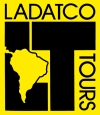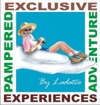

Destinations
Experiences
 |
L A
D A T C O T O U R
S |
 |
||||||||
| HOME | South America | Falkland Islands | Antarctica | Unique Destinations |
Unique Experiences |
Newsstand | ||||
 |
Trujillo Trujillo |
 |
 |
 |
 |
ABOUT TRUJILLO - compliments of PromPeru:
Trujillo is a friendly and colonial city, which is at the same time one of the main economic and cultural centers of northern Peru. What is more, it is the capital of the marinera dance and Peruvian El Paso horse breeding. It was the center of the Chimú culture (1100-1400 AD), whose Chan Chan citadel is the largest pre-Hispanic mud-brick construction in the Americas.
Trujillo was founded in 1534 as one of the main cities in the vice-regency. The old quarter features many fine colonial buildings such as the Cathedral, the El Carmen monastery, churches and mansions which symbolize the beauty and architectural harmony of the city.
On the city's outskirts, visitors can take in an older style of architecture, where the remains of a pre-Hispanic civilization still rear above the green fields and desert sands. The Chan Chan citadel, the El Brujo complex and the temples of the Sun, the Moon and the Dragon, amongst others, are evidence of highly advanced northern civilizations.
Beaches near Trujillo are ideal for visitors, not just because of the superb local seafood, fresh caught, or the cool sea breeze, but also for the opportunities to be had for adventure sports and contact with tradition. Huanchaco is a picturesque fishing cove where one can find the ancient craft that appeared on Mochica pottery and on friezes at Chan Chan: the caballitos de totora, rafts woven from the totora reed in an art that has been handed down over generations. Similar skill is shown by the surfing crowd, which year after year gather in the port of Malabrigo, where a surfing championship is staged every March. The local beaches feature the world's longest waves.
But above all, Trujillo is the land of the marinera, and the townspeople hold the National Marinera Contest every March, In September, the streets and houses are festooned with decorations to receive a procession of floats, competitions and parties. This is the International Spring Festival, which celebrates the arrival of spring in Peru.SOME PLACES OF INTEREST:
"Plaza de Armas" or "Plaza Mayor", which is considerate the biggest in Perú, surrounding for beautiful typical colonial large houses and the Cathedral. In the middle is built in marble the Freedom Monument, work done by the German Edmund Moller.Orbegoso's Marshal House: This house has a big historical worth because there lived the Marshal Luis de Orbegoso, Olmos's Count and the unique Trujillano who became President of Perú.
Emancipation's House: (At the moment headquarter of the Continental Bank) There is where the Independence was proclaimed, which end in 1920. It was headquarter of the First Constitutional Congress of Perú in 1923.
"Iturregui" Palace: (At the moment headquarter of the Central Club) It was reconstructed about the middle of the XIX century. It has an area of 3,548 mts.2, and up to references, it is a reply of a Florentine palace. Composed by beautiful yards with beautiful living rooms coffered with bread of gold.
"El Recreo" Square: One of the nicest point of the city, located at the end of the Pizarro's street. We will visit the "Caja de Agua" (Water Container) as well as its historical marble fountain, which was inspired in the 4 Vivaldi's stations. Previously it was located in the "Plaza de Armas " of Trujillo.
"El Carmen" Church and its Pinacotheca: In spite of the time and changing of the mode, it is considerate as the most complete and authentic pinacotheca. It shows the qualities of the architecture, liturgical furniture, canvases, images and murals between other artistic expressions of Barroque and Rococo according to the middle of the XVII century.
Archaelogical Museum of the National University of Trujillo: Located in a Republican Mansion, it still conserves pre-Columbian culture remains ordered chronologically as: ceramic, textile, liturgical material, metallurgy, plumario art and wooden, etc.